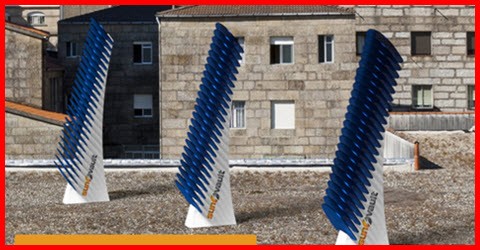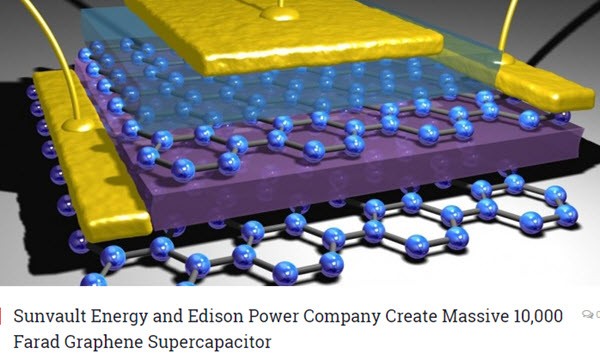.
The Start Up Company SunVault Is Developing Such Appliances
Their Technology is based around massive graphene super capacitors.
The great thing about super capacitors is that compared to batteries, they are lighter. smaller. cheaper and can be charged and discharged rapidly.
And they last a lot longer than batteries – they are able to be cycled many more times.
“Our technology uses more of the graphene’s surface area, which creates a more densely created product. This increases the conductivity and storage within the device. We’ve taken it from one farad, to a thousand farads, to ten thousands farads and now we’re looking at a megafarad,” said Monaghan.
Smith said that a megafarad is the capacity you need to run a home.
This is the first step in what was intended to be a totally independent solar panel. SunVault was originally developing a 3-dimensional solar appliance that collected energy on three sides and articulated to the sun while generating and storing power, “with zero to minimal reliance on additional power from the grid.”
After encountering lifespan issues with the biocel technology storing the energy, SunVault decided to focus on the storage side first.
The company quickly realized there were a number of applications besides storing solar energy. As one might expect from a technology that combines the speed of a supercapacitor with energy storage, it is ideal for grid stabilization. SunVault’s technology could also be used in a smartphone or to power an electric vehicle.
Tesla currently uses a 450-pound lithium battery that delivers a ten kWh charge. Though SunVault’s storage device delivers one kWh, ten of them only weigh 44 pounds. Further, Monaghan believes the system could be manufactured for a third of the cost.
Learn More about this company in the original article.
Feature image source from the company website.
Graphene capacitor image source




